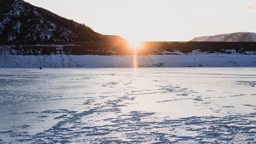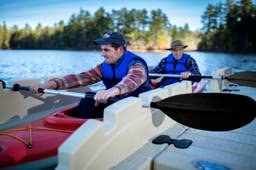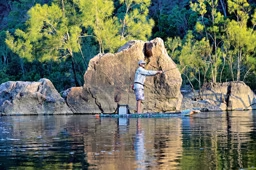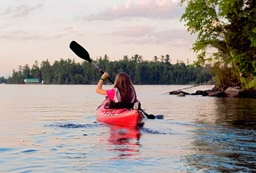
Flipping your canoe or kayak can be a scary event, unless you’re prepared. But, how can you get back in your boat and ensure that your day on the water doesn’t become memorable for the wrong reasons? Here are some tips from Ethan Ebersole, a canoe and kayak instructor who has taught thousands of paddlers over the past 25 years.
See also The Best Life Jackets for Dogs
Kayak – Over and Out
1. If you flip, exit your boat. Pull the loop on the front of your spray skirt if you’re wearing one, and press your body out of your cockpit. But don’t abandon your ship or paddle – keep a hand on both. 2. Slosh whatever water you can out of your boat. Then, still holding your boat, inflate your paddle float or grab your foam paddle float and slip it over one blade of your paddle.
3. With your body in the water next to the cockpit of the boat, slide the free blade of your paddle under the rear deck bungees or under the cockpit rim (called combing) on the side of the boat farthest from you, and let the blade with the float rest in the water – creating an outrigger.
4. Use the outrigger to help you swim up the back of the boat with your head facing the stern and your belly button positioned just behind the cockpit on the rear of the boat. Stay low and lean on the outrigger for support and stability.
5. Gently slide your feet into the cockpit with your weight still on the outrigger and then gently start to roll, like you’re rolling over in your sleeping bag with feet still in the cockpit. At the last second, flip your body and plop into your seat. Leave your paddle outrigger in place until you are done bailing or pumping out your boat.
Canoe – Friends to the T-rescue
A canoe without flotation won’t right itself, but if you’re paddling with friends they can perform a T-rescue. 1. When you flip, hold onto your paddle or find it immediately and hold onto it and your boat.
2. Position your swamped boat perpendicular to the rescue boat and push the end farthest from the rescue boat down into the water. This will allow the rescue paddlers to grab the bow of the swamped boat and pull it up onto the gunwale (side) of the rescue canoe. Rescuers should be on their knees for greatest stability for the entire procedure.
3. Rescue boaters will then gently feed the upside down swamped boat to the center of the rescue boat in a “T” formation, allowing the water to drain as they go, until the swamped boat is water free and balanced across the center of the rescue boat. During this process, swimmers should stay out of the way – positioning themselves near one of the ends of the rescuing canoe.
4. Next, the rescuers will flip the rescued canoe and slide it into the water, while still in “T” formation. Then they should pull it parallel to the rescue boat.
5. Once the rescued boat is drained and parallel to the rescue boat, rescuers will lean across the side of the rescue boat and securely grab the cross bars of the wet canoe, tipping it away from the rescue boat and towards the swimmers, who should position themselves on the far side of the wet canoe toward the center.
6. One swimmer at a time will then swim/scramble over the gunwale into the rescued boat. Once a swimmer has his torso in the boat past his belly button, rescuers can press down on the gunwale closest to them, scooping the swimmer into the rescued boat.
Safety in Numbers
Remember, whether you’re canoeing or kayaking, paddling with others is always safest. Whenever you go out paddling, whether the water is warm or cold, always wear a U.S. Coast Guard-approved PFD, and be dressed for immersion – not air temperature.Wear hydrophobic clothing like fleece, wool or synthetics, not cotton, and make sure your craft is matched to the body of water you’re paddling.
In other words, if your boat doesn’t have supplemental flotation like an airbag or sealed bulkheads, stick to the waters near the shoreline.
You can add flotation to your canoe with a center flotation bag, about $100 including the parts to install it at home. If you’re in a kayak, have a paddle float and pump stored under your deck bungees where they’re secure but easily accessible.
Berne Broudy is a freelance journalist and photographer.










